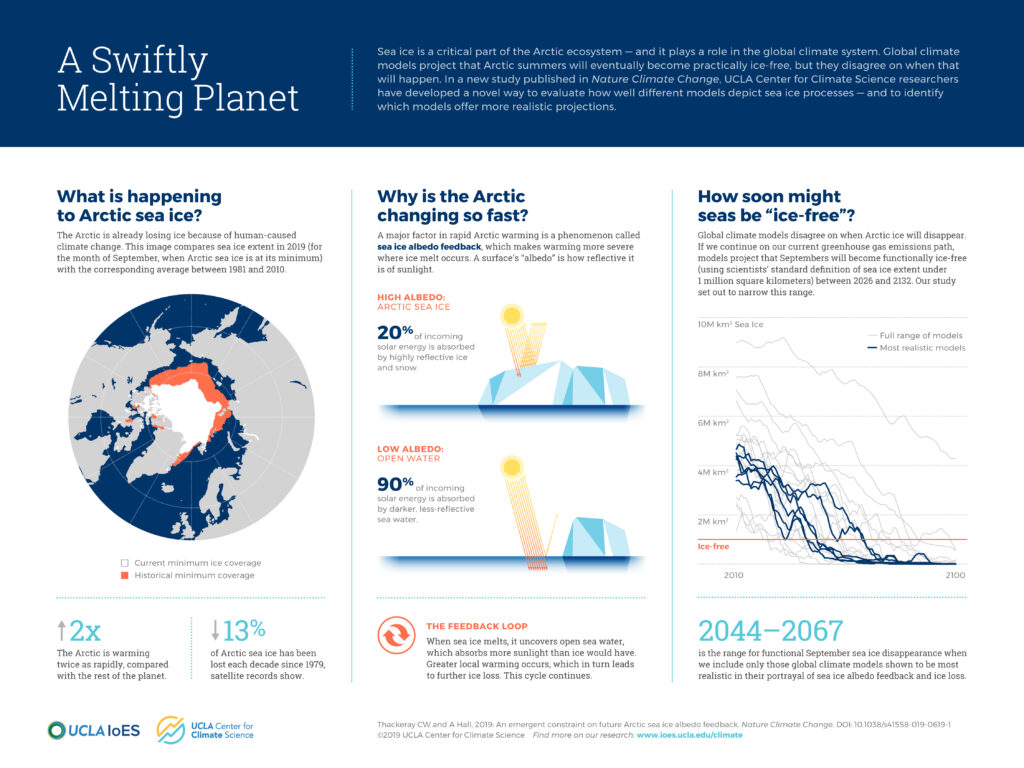Although our research is primarily focused on regional climate change concerns, such as the future of extreme precipitation and fire in California, we are active in global climate research as well. That’s because regional climate research starts with a toolkit developed to operate the global scale. A better understanding of those global tools — their strengths and limitations — helps us do better regional work.
Context
The basic tools that underpin our work are global climate models, powerful supercomputing programs that simulate the global climate system. A major source of uncertainty is that different global climate models give different answers about future climate. The range of answers across the different models—what climate scientists refer to as the spread—can be very large. One theme of our research is to analyze global climate models to understand the sources of spread, and to identify ways it can be reduced.
The breakthrough
Our group has pioneered the use of emergent constraints, an approach that uses observations of the current climate to constrain, or narrow the range of, global climate model answers about the future. As part of this work, we are improving our understanding of certain climate feedbacks, processes within the climate system that can either worsen or lessen climate change.
Key findings
The graphic below summarizes our latest findings. Global climate models show that Arctic sea ice is on a course to disappear for at least part of the year — but they disagree widely about when that will occur. In a new study, we identified which models give the most realistic projections, based on how accurately they portray the ice loss that occurs seasonally each year. The work, led by assistant researcher and Climate Science Lead Chad Thackeray, is published in Nature Climate Change.
Related Publications





